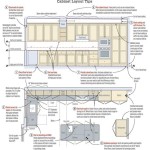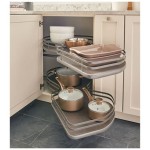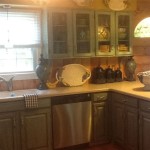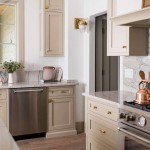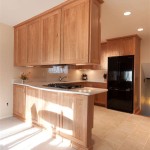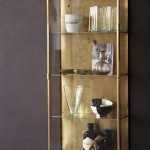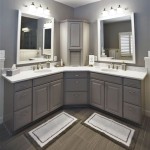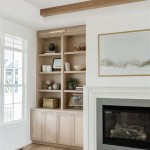Do You Have To Primer Cabinets Before Painting?
Painting cabinets is a popular and cost-effective way to update a kitchen or bathroom without a complete renovation. The question of whether or not to prime cabinets before painting frequently arises, and the answer is generally yes, especially when aiming for a professional-looking and durable finish. This article explores the reasons why priming cabinets is often crucial for achieving optimal results and when it might be possible to skip this step, examining the factors that influence the decision.
The Importance of Priming Cabinets
Priming cabinets offers several crucial benefits that directly impact the final appearance and longevity of the paint job. These benefits include improved adhesion, stain blocking, surface sealing, and uniformity of the final color. Skipping the priming step can often lead to issues such as peeling paint, uneven coverage, and a subpar finish that requires significant rework.
One of the primary reasons to prime cabinets is to improve paint adhesion. Most cabinet surfaces, whether they are made of wood, laminate, or metal, are not naturally conducive to accepting paint. Existing coatings or finishes can create a barrier, preventing the new paint from properly bonding to the surface. Primer acts as a bonding agent, creating a uniform and porous surface to which the paint can effectively adhere. Without primer, the paint might chip easily, peel over time, or simply refuse to bond correctly to the cabinet surface when subjected to everyday use.
Furthermore, cabinets, particularly older ones, often have existing stains from grease, water damage, or marker pens. These stains can bleed through the fresh paint, discoloring the topcoat and ruining the aesthetic appeal of the new paint job. Primer acts as a stain blocker, preventing these underlying stains from migrating to the surface. Specifically, stain-blocking primers are designed to encapsulate these stains, ensuring that only the true paint color is visible. For cabinets with stubborn stains, using a high-quality stain-blocking primer is non-negotiable.
Many cabinet materials are porous and readily absorb paint. This absorption can lead to uneven color distribution and require multiple coats of paint to achieve complete coverage. Primer seals the surface, reducing its absorbency and creating a more uniform substrate for the paint. This reduces the amount of paint needed for full coverage, saving both time and money. A sealed surface also provides a more consistent sheen level for the topcoat, further enhancing the finish’s appearance.
Finally, primer provides a uniform base for the paint. Cabinet surfaces can have varying levels of sheen or slight color differences, even if they appear similar to the naked eye. Applying primer ensures that the paint coat goes on an even-toned surface, preventing any underlying color variations from showing through. This is especially important when painting cabinets a light or bright color, as these colors are more susceptible to highlighting imperfections in the underlying surface.
When Priming Might Be Optional
While priming is generally recommended, there are limited circumstances where it might be considered optional. These situations are dependent on the condition of the cabinets, the type of paint being used, and the desired level of finish. However, even in these situations, careful consideration is required before bypassing the priming step.
If cabinets have been previously painted with a paint that is in excellent condition, and the new paint is the same type and color, priming might not be strictly necessary. This assumes that the existing paint layer is well-adhered, clean, and free from any imperfections or stains. Before proceeding without priming, the existing painted surface must be thoroughly cleaned and lightly sanded to create a slightly roughened surface for the new paint to grip. It's crucial to ensure that the existing paint is compatible with the new paint to avoid any adverse reactions, such as wrinkling or poor adhesion. When in doubt, testing a small, inconspicuous area with the new paint is recommended to assess its compatibility and adhesion before proceeding with the entire project.
Certain self-priming paints claim to eliminate the need for a separate primer. These paints are formulated with additives that supposedly enhance adhesion and provide stain blocking capabilities. However, the effectiveness of self-priming paints varies considerably depending on the brand and formulation. While they might perform adequately on surfaces in excellent condition, they may not be sufficient for cabinets with stains, damage, or previous coatings. It is vital to carefully evaluate the manufacturer's claims and read reviews from other users before relying solely on a self-priming paint, as well as consider applying multiple coats.
If cabinets are new and unfinished, and the chosen paint is explicitly designed for use on raw wood without a primer, priming might be skipped. However, it's important to verify that the wood is properly sanded and cleaned to remove any mill glaze or residue that could interfere with paint adhesion. Even with paints designed for raw wood, priming can still provide a smoother, more uniform finish and enhance the paint's durability. It's still best practice to test the paint on an inconspicuous area. These raw wood cabinets must have no stains, damage, or knots that can bleed through the finish, and the cabinets must never have been previously coated.
Even in situations where priming appears optional, it is always prudent to err on the side of caution and apply a coat of primer. The cost of primer is relatively low compared to the cost of paint and the labor involved in repainting cabinets. Priming provides an added layer of protection and ensures a higher-quality, longer-lasting finish. Ultimately, the decision of whether or not to prime should be based on a thorough assessment of the cabinet's condition, the type of paint being used, and the desired outcome of the painting project.
Types of Primer for Cabinets
Selecting the appropriate primer is as critical as deciding whether or not to prime in the first place. Different types of primers are formulated for different materials and purposes. Using the wrong primer can lead to poor adhesion, inadequate stain blocking, and other problems. The common types of primers typically used for painting cabinets include latex primers, oil-based primers, and shellac-based primers, each with distinctive properties and applications.
Latex primers are water-based and are ideal for use on previously painted surfaces or bare drywall. They offer good adhesion, are low in odor, and easy to clean up with soap and water. These primers are flexible and less prone to cracking than oil-based primers. However, latex primers are not the best choice for stain blocking or sealing bare wood, as water contained in the primer can cause the wood to swell and raise the grain. They also are not suitable for surfaces that might be exposed to frequent moisture or high humidity. Latex primers are a good all-around choice for cabinets that are already in good condition and do not require extensive stain blocking.
Oil-based primers excel at sealing bare wood, blocking stains, and providing excellent adhesion to glossy surfaces. They penetrate deeply into the wood pores, creating a strong bond for the paint. Oil-based primers are suitable for cabinets made of wood, metal, or previously painted surfaces. They also offer superior stain-blocking capabilities compared to latex primers. However, oil-based primers have a strong odor, require mineral spirits for cleanup, and take longer to dry than latex primers. They also become brittle over time and can crack, especially in areas that experience temperature fluctuations. Due to these reasons, oil-based primers are not as commonly used as they once were.
Shellac-based primers are the ultimate stain blockers and are effective at sealing knots in wood and preventing odors from penetrating through the paint. They dry quickly and provide excellent adhesion to a wide range of surfaces, including wood, metal, and plastic laminates. Shellac-based primers are also resistant to water damage and mold growth, making them a good choice for bathrooms or kitchens. However, they are the most expensive type of primer and require denatured alcohol for cleanup. They also have a strong odor and can be brittle, which means they are prone to cracking. Shellac-based primers are typically reserved for situations where other primers have failed or when dealing with severe stains or odors.
Choosing the best primer for cabinets depends on multiple factors, including the material of the cabinets, their condition, and any specific issues such as stains, odors, or glossy surfaces. It is advisable to test the primer in an inconspicuous area before applying it to the entire surface. Ultimately, the selected primer should address the specific challenges presented by the cabinets and provide a solid foundation for a durable and visually appealing paint job.

How To Prime Cabinets For A Smooth Finish The Turquoise Home

Refinish Kitchen Cabinets With Kilz Restoration Primer

How To Paint Kitchen Cabinets A Step By Guide Confessions Of Serial Do It Yourselfer

How To Paint Kitchen Cabinets From A Diyer Who Has Done It 3 Times

How To Paint Kitchen Cabinets A Step By Guide Confessions Of Serial Do It Yourselfer

How To Prime Cabinets For A Smooth Finish The Turquoise Home

Do You Have To Prime Cabinets That Are Already Painted

How To Paint Laminate Cabinets Without Sanding The Palette Muse

Diy Painting Your Kitchen Cabinets The Right Way

The Best Primer For Cabinets Erin Zubot Design
Related Posts

